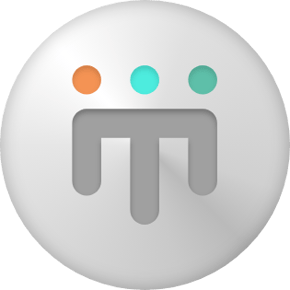Besides what’s for dinner tonight and your weekend plans, the other thing on your mind is Generative AI.
And as the world is going through rapid technological change, organisations face pressure to adopt Generative AI to remain competitive.
.webp?width=480&height=400&name=giphy%20(44).webp)
For HR, employee service is emerging as the front line in the battle for operational efficiency and enhanced employee engagement as organisations face the integration question and are unsure about the best way to integrate Generative AI.
The big question is no longer whether to integrate Generative AI but how to do it right, and many organisations need help finding the best approach.
According to the AFR, 90 per cent of executives in Australia cite Generative AI as a priority for their organisation. Yet most executives are still in the observational phase—sitting, waiting, wishing and waiting to see what happens next.

That’s not so surprising. We know people are hesitant to change, especially technological change.
From the advent of the portable camera or the grammar phone in the 1870s to the iPhone in 2007, every significant technological advancement has faced scepticism from society. People are hesitant because the technology represents something inherently uncertain and different. For organisations, it means a change in how they operate.
.webp?width=480&height=357&name=giphy%20(45).webp)
It’s a bit like being a frog in a pot of water that’s slowly heating up. Each time a new technology hits the pan—the internet, iPhone, or AI, it slightly increases the temperature.
But Generative AI has taken the lid off the pot, cranked the heat on the stove and threw the fire alarm out the window. So sooner or later, things will get piping hot and organisations need to respond.
So should organisations reinvent themselves for Generative AI, or should there be a more incremental approach? And should they do it alone?
Generative AI v Traditional AI
Generative AI and traditional AI are fundamentally different in their applications and capabilities.
.webp?width=480&height=480&name=giphy%20(46).webp)
Traditional AI focuses on automating specific tasks based on predefined rules and historical data, such as data analysis, process automation, or predictive modelling. It optimises efficiency and makes accurate predictions but operates within a fixed framework. For example, many HR teams use an ATS, which uses traditional AI to screen resumes using automation based on predictive rules.
Generative AI, on the other hand, automates and creates new content, text, images, software code, and more. Think tools like ChatGPT, which generates human-like text responses, or MidJourney, which creates art based on user prompts.
Unlike traditional AI, Generative AI is designed for creativity and adaptability, enabling organisations to unlock new ways of problem-solving and innovation. It means you can move away from HR admin and focus on strategic HR that elevates employee engagement and efficiency.

This brings us to an important point, diving into Generative AI headfirst might not be the smartest move.
Don’t DIY AI
Salesforce came out with a great line last month. Albeit it was to sell their new AI product Agentforce. But putting that aside for a moment, they made a good point.
.webp?width=480&height=480&name=giphy%20(47).webp)
Instead of overhauling your IT in a panic, leverage the software and platforms of existing vendors adopting Generative AI into your organisation.
Why reinvent the wheel? Leveraging proven software and tools saves time and resources and reduces the risk of early missteps for your organisation. Rather than burdening your customers with the costs and complexities of creating, training, and maintaining Generative AI, partner with vendors who already have.
So, start with what’s already available to remain competitive for now.

Tap into established tools while laying a foundation for your team to adapt gradually. This means you can benefit from AI advancements without the steep learning curve and risks associated with building everything from scratch.
To make this shift concrete and practical, follow these steps:
Don’t leave employees in the dark: Explain why AI is being integrated with a partner and the benefits they’ll bring. When employees understand the rationale behind the change, they’re more likely to embrace it and feel less threatened.
Choose your integration thoughtfully: Don’t just think about how the platform can help your organisation today, think about if it can support your organisation's long-term roadmap. Ask vendors key questions like: Can the product be scaled? How do you approach updates and improvements? Do you offer customisation to suit your specific goals? The answers will reveal whether they’re the right fit for your organisation’s evolving needs.
Slow and steady transformation: Rome wasn’t built overnight. Start with smaller projects to learn and adapt, gathering insights along the way. These early pilot lessons can pave the way for more significant transformations without the risks associated with big, sweeping changes.
Get input from others:
Successful Generative AI integration requires feedback from other teams. Involving different departments helps identify key opportunities for AI integration and prevents isolated deployments that might miss the bigger picture.
Generative AI is a game-changer.

It has the opportunity to rethink operations, customer experience, and decision-making. But you don’t have to dive in headfirst to reap the rewards. Tapping into the experience and infrastructure of your vendors means you can reap the rewards of Generative AI while gradually building the skills and confidence needed for a larger, long-term strategy.
Approach it with ambition and a healthy dose of caution—so think of it as an evolution, not a revolution.

